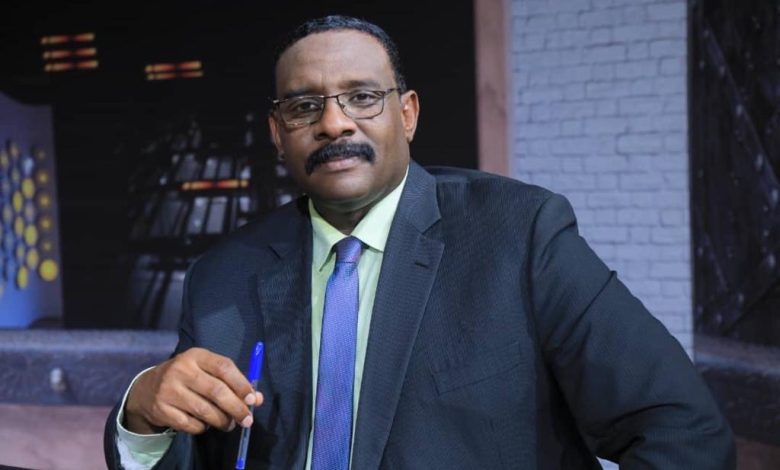The First Bullet and the “Third Party” Theory..!

By: Diaa Al-Din Bilal
1
In September 2011, fighting erupted in the Abyei region between the Sudanese army and the SPLA (Sudan People’s Liberation Army) following the secession of the South.
Both sides had raised their state of military readiness beforehand, each trying not to be caught off guard by the first bullet.
When that bullet was finally fired, fierce fighting broke out, and a pressing question emerged:
Who started the war first?
The SPLA came out to the media claiming that an undisciplined soldier had triggered the battle, acting on his own in a moment of lost judgment and firing the first shot.
Because of that single bullet, the SPLA—who had entered the area with joy under the Naivasha Protocols—was forced to leave, defeated, due to one rogue soldier’s foolish action!
2
In that same year, war broke out in Blue Nile State. People wondered: Was this pre-planned for a zero hour chosen by one of the parties, or did it happen by sheer coincidence?
At the time, the newspaper Al-Akhbar reported that an unidentified soldier fired at a vehicle that refused to stop at a checkpoint.
And thus, with interception bullets from an unknown soldier, Blue Nile moved into a state of open warfare.
3
Forty-eight hours before the most recent war between the army and the rebel Rapid Support Forces (RSF) broke out, I wrote on my Facebook page:
> “Everything there is flammable, just waiting for a spark or a stray bullet. Ears are eavesdropping on the footsteps of ants, anxious eyes are searching for the black thread of conspiracy in the darkness, and cautious noses are sniffing for danger.
In such a situation, war escapes the rooms of the elite and rests at the muzzle of a young soldier’s Kalashnikov.”
4
What happened in April of last year is different from what occurred in 2011 in Abyei and Blue Nile. This wasn’t just about one unknown soldier’s bullet.
The militia (RSF) did everything possible to ignite the fire:
It advanced with armored vehicles toward Merowe Airport without army coordination or approval.
It imposed full blockades on airports in El Obeid, El Fasher, and Nyala.
It brought hundreds of Land Cruisers equipped with rocket launchers and anti-aircraft guns into Khartoum, deploying forces at key locations.
On the night of April 14, it arrested Brigadier Mamoun Mohamed Ahmed, commander of Al-Baqir Brigade, as shown in a video later broadcast by the militia.
It gathered nearly 600 military vehicles and “Bokline” excavators near Al-Burhan’s residence, preparing to demolish the wall between the army leader’s house and the militia leader’s house—awaiting zero hour.
5
Thus began the final steps of a coup against the army leadership—a swift, surprise operation designed to seize power and install the rule of the Dagalo family.
The militia had two main ambitions:
1. Force army leadership to sign the Framework Agreement, allowing RSF to remain an independent parallel force during a long transition under a superficial civilian cover.
2. If that failed, as sources revealed, the second option was to arrest the army’s top brass and throw them in prison—a scenario Hemedti had allegedly communicated to European representatives.
In his first TV appearance on the day the war broke out, the RSF leader stated:
> “Within two hours, either Al-Burhan will be killed or captured. All airports have been neutralized!”
6
If the army had wanted to start the war, the entire state’s military and security apparatus would have been on high alert.
If it were the initiator, the militia wouldn’t have been able to capture hundreds of its officers in the first hour of battle.
If it had started the war, army officers wouldn’t have left their families living in Airport District—near the militia leader’s heavily armed home—vulnerable to his grip.
If the army had started, its commander wouldn’t have waited until RSF stormed his bedroom. If not for his guards’ bravery, he would now be dead or in captivity!
7
As for the “third party” theory—it’s a tired, recycled narrative borrowed from Sudan’s political archive and no longer marketable.
When senior army officers were executed at the Guest House in 1971 during Hashem Al-Atta’s coup, it was claimed a “third party” did it—despite all evidence and confessions pointing directly to Abu Sheiba, the guard commander.
When protesters were killed during the sit-in at Army HQ on Eid night in 2019, a “third party” was blamed—despite video evidence and reliable information proving RSF carried out the dispersal under Abdul Rahim Dagalo’s supervision.
8
If Islamists wanted to ignite war, they wouldn’t have fired just one bullet at the Sports City. They would’ve encircled militia positions nationwide.
If they had started it, they would’ve secured their leaders in advance, instead of letting Anas Omar and Al-Haj Adam be arrested at home—the latter only released after tribal mediation.
If they were behind the war, their leaders would’ve fled prisons and hospitals in sync with the first bullet—not stayed put for over ten days!
And if the army or Islamists were the aggressors, logic dictates that Hemedti would’ve been attacked at his home, not Al-Burhan.
Most importantly, endorsing the “third party” narrative directly contradicts the claim that Ali Karti is commanding the army—because if he truly were, he wouldn’t need a third party to carry out his agenda!
Still, the army leadership must clearly answer:
With all the signs of RSF’s intent to launch war, why did the army remain in a state of low alert? What losing bets was it relying on?
Finally:
All that said, what happened at the Sports City pales in comparison to RSF’s overt war maneuvers.
War, in its simplest definition, consists of four pillars:
Advance, attack, defense, and withdrawal.
Thus, trying to frame the war as having started from the Sports City is a deceptive attempt to divert attention from the criminal plot orchestrated by the Dagalo family on the morning of April 15.



